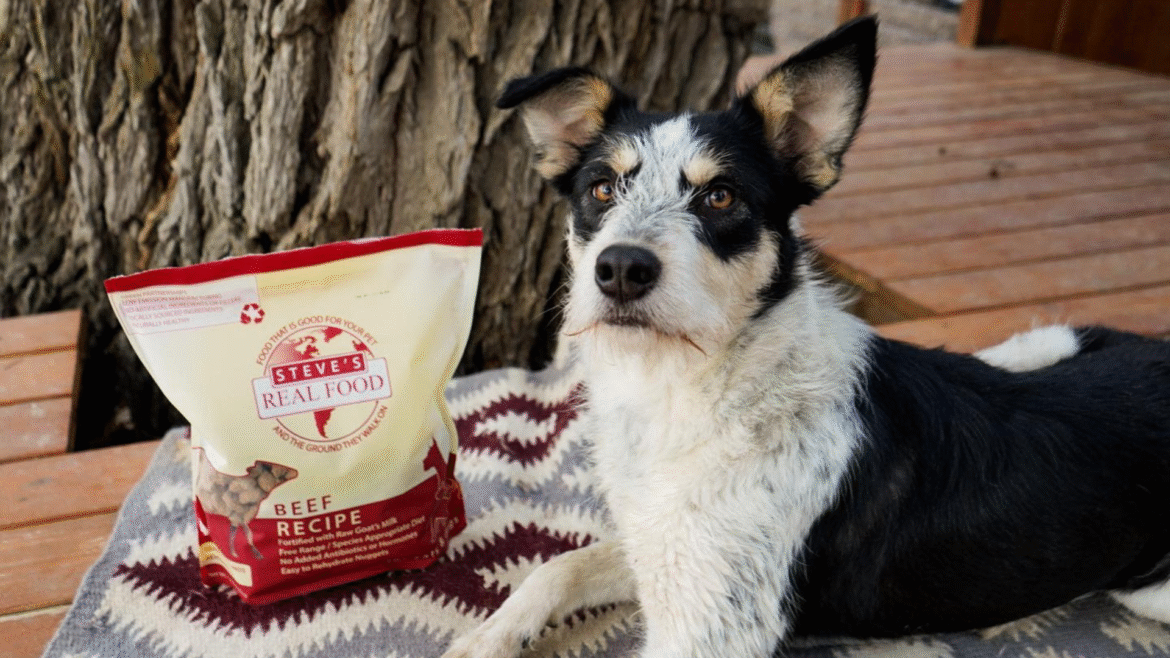If you’ve ever wandered down the pet food aisle and felt your brain short-circuit, you’re not alone. Seriously. One side is full of kibble bags, the other has shiny freeze-dried packets, and somewhere in the middle there’s raw meat that practically stares at you. You might think, “Great, I’ll just pick one and be done with it,” but feeding pets isn’t that simple.
The thing is, your dog or cat isn’t just a vacuum for calories. Their diet affects energy, coat shine, digestion, weight, and even mood. And unlike us, they can’t say, “I think I need something fresher today.” So the responsibility falls squarely on you. Which means it’s worth digging in.
Processed Foods: The “Old Faithful”
Processed foods — kibble and canned meals — have been around forever. They’re predictable, convenient, and yes, they have their place.
Why They Work
- Convenience: Scoop it, pour it, done. If you’re juggling work, life, and a pet that acts like dinner is the most important thing in the world, this is a lifesaver.
- Consistent nutrition: Every bite contains roughly the same nutrients. No guessing.
- Affordable: Compared to raw or freeze-dried, processed food is usually lighter on the wallet.
- Shelf-stable: No need for freezer space or complicated thawing.
Things to Watch Out For
- Highly processed: High-heat cooking can destroy natural enzymes and some nutrients. Yes, vitamins are added back, but it’s not quite the same as fresh.
- Fillers: Many cheaper brands bulk up with corn, wheat, or soy. Your pet may tolerate it fine, but it’s not exactly gourmet.
- Marketing claims: “Dental health” kibble isn’t a replacement for brushing or professional cleanings. Just saying.
Personal note: When I first adopted my cat, she refused everything but kibble. No raw, no wet food. It wasn’t glamorous, but it gave her consistency while she settled in. Sometimes, “boring” works.
Raw Diets: Back-to-Nature… Or Too Risky?
Raw feeding is the trendy one that sparks debates everywhere. The idea is simple: mimic what wild ancestors ate — raw meat, organs, and sometimes bones.
Why People Swear By It
- Closer to natural diets: Wolves and wildcats didn’t cook dinner. That’s the core argument.
- Noticeable results: Shiny coats, lean muscle, and sometimes more energy.
- Control: You know exactly what’s going into the bowl.
What Can Go Wrong
- Bacteria risk: Salmonella, E. coli, Listeria — not just scary words. Pets can sometimes handle it, but germs don’t stay contained. They end up on your counters, hands, and occasionally your toddler’s toys.
- Nutritional balance: Meat alone isn’t enough. Pets need precise calcium-phosphorus ratios, vitamins, and organs. Getting it wrong can mess with bones or organs.
- Time and cost: Buying, prepping, freezing, thawing — it’s a commitment, not a convenience.
Storytime: A friend fed her Labrador a raw diet religiously. One day, the pup got a bacterial infection. Vet bills and stress followed. She didn’t give up raw entirely but scaled it back and started prepping more carefully. It’s rewarding but comes with real risks.
Freeze-Dried Foods: The Middle Path
Freeze-dried foods are basically raw ingredients dehydrated at low temperatures. The idea is to preserve nutrients while making them shelf-stable.
Pros
- Nutrient retention: More natural enzymes survive than in high-heat processed food.
- Convenient: Light, easy to store, no freezer needed.
- Flexible: Feed as a main meal, mix into kibble, or give as treats.
Cons
- Cost: Usually more expensive per ounce.
- Hydration required: Pets still need water. Dry freeze-dried food isn’t enough.
- Not risk-free: Some bacteria can survive, so handling matters.
Finding the “Best” Option
Here’s the honest answer: there isn’t one. It depends on your pet and your household.
- Busy lifestyle: Processed food is safe and reliable.
- Time and dedication: Raw can be great if done right.
- Balance seekers: Freeze-dried is convenient and nutrient-dense but pricier.
Many owners combine diets. Kibble as a base with freeze-dried toppers, or raw on weekends and kibble during the week. Flexibility often beats chasing a single “perfect” diet.
Transitioning Foods Without Chaos
Sudden changes can trigger upset stomachs. Do it gradually:
- Mix slowly: Add small amounts of the new food over 7–10 days.
- Observe: Vomiting, diarrhea, or itching signals trouble.
- Hydrate: Especially critical with raw or freeze-dried meals.
Pro tip: Some pets love the ritual of a new food. Others, like my cat, inspect it suspiciously for three days before acknowledging it exists. Patience pays.
Common Mistakes
- Jumping straight into raw without research.
- Ignoring vet advice for special health conditions.
- Believing every marketing claim. Expensive doesn’t always mean better.
- Sticking to one protein forever. Rotation helps prevent allergies and nutrient gaps.
Signs Your Pet Isn’t Thriving
Keep an eye on:
- Rapid weight gain or loss
- Persistent diarrhea or vomiting
- Lethargy
- Dull coat or flaky skin
- Bad breath beyond normal
Any of these warrants a vet visit. Don’t wait until it’s severe.
Bottom Line
Feeding pets isn’t about picking the trendiest label. It’s about keeping them healthy and safe while fitting your life. Kibble is reliable, raw can be rewarding if managed properly, and freeze-dried sits in the middle.
Your pet doesn’t care about labels. They care that you show up consistently with food they can digest and enjoy. Balance beats perfection.
FAQs
- Can I mix raw and kibble?
Yes, just transition gradually. - Is freeze-dried food sufficient on its own?
If it’s complete and rehydrated properly, yes. - How do I know if my pet is thriving?
Shiny coat, steady weight, good energy, and normal stools. - Should I rotate proteins?
Yes, it prevents allergies and nutrient gaps. - Is kibble bad?
Not if it’s high-quality and sometimes supplemented with fresh toppers.



